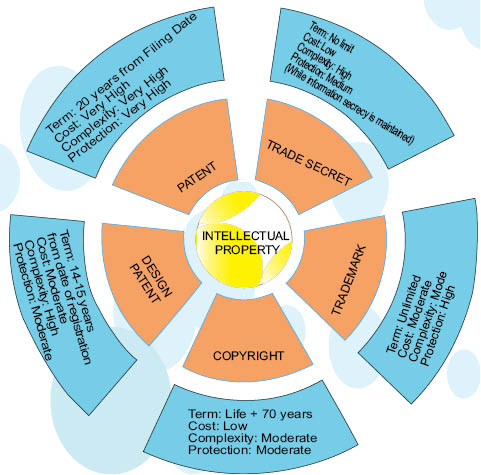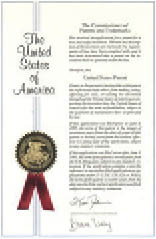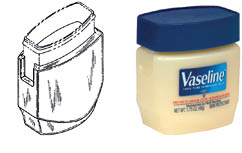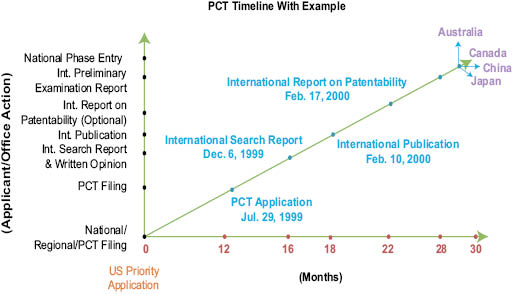PATENTS AND TRADE SECRETS
Author
Charles Brumlik, J.D., Ph.D.
ABSTRACT
Intangibles make up a large part of profits and sustainable market share in products ranging from designer cosmetics to everyday personal care. Intellectual property (IP) is a property right for intangible property. An IP owner, like the owner of real property (e.g., a house or car) can normally profit from it or exclude others from its use.
IP plays an essential role in today’s knowledge-driven economy. Developing and marketing new products and services relies heavily on legally reducing competition. A protective IP portfolio is a common example of a barrier to entry. Since IP is mainly a license to sue in court, IP owners must enforce their IP or credibly threaten such enforcement.
The most common forms of intellectual property most used by the cosmetic and personal care industry are: utility patents, plant patents (rare), design patents, industrial design rights, trade secrets, copyrights and other rights of authors, trademarks, service marks, and trade dress. Examples of other property rights or barriers to entry for intangibles include: contractual rights, Internet addresses (e.g., URLs), restricted information (e.g., confidential information, proprietary information), regulatory approvals (e.g., EPA, FDA), and certifications (e.g., organic).
2.4.2 Typical IP Timing in Cosmetics and Personal Care
b. Utility Patent (most common patent)
c. U.S. Provisional Application
d. Design Patent or Industrial Design (for nonfunctional
look of product)
e. Plant Patent (for live plant species)
f. Utility Model (sometimes called patent-lite,
mainly in China, Japan, and Korea)
2.4.4 General Criteria of Patentability
2.4.5 Patent Application Timeline
2.4.6 Patent Organizations Across the World
2.4.7 Patent Cooperation Treaty (PCT) – The main route
for obtaining patents international
b. Regional Patent Organizations
2.4.9 Trademarks & Service Marks
2.4.10 Enforcing IP Rights & Reducing IP Risk
b. IP Information from Packaging
c. IP Issues While Partnering with Third Parties
d. IP Litigation & Patent Infringement
2.4.11 Recent and Hot IP Issues
a. Asian Natural Herbal Ingredients
2.4.12 Mining IP Information—for Search, Analytics, Competitive Intelligence
e. Searching for Industrial Designs
Intellectual property (IP) is a property right for intangible property. An IP owner, like the owner of real property (e.g., a house or car) can normally profit from it or exclude others from its use.
IP plays an essential role in today’s knowledge-driven economy. Developing and marketing new products and services relies heavily on legally reducing competition. A protective IP portfolio is a common example of a barrier to . Since IP is mainly a license to sue in court, IP owners must enforce their IP or credibly threaten such enforcement.
The most common forms of intellectual property most used by the cosmetic and personal care industry are:
- ● Utility patents, plant patents (rare)
- ● Design Patent Industrial Design Right
- ● Trade secrets
- ● Copyrights and other rights of authors
- ● Trademarks (TM, ®), Service Marks (SM, ®), Trade Dress
Other property rights or barriers to entry for intangibles include:
- ● Contractual rights
- ● Internet addresses (e.g., URLs)
- ● Restricted information (e.g., confidential information, proprietary information)
- ● Regulatory approvals (e.g., EPA, FDA)
- ● Certifications (e.g., organic)

Figure 1. Intellectual Property Comparison
2.4.2 TYPICAL IP TIMING IN COSMETICS AND PERSONAL CARE
IP choice and timing are critical when creating intellectual property. Many times, if IP is not considered, formalized, and applied for at the right time, significant rights are lost. Figure 2 demonstrates typical IP examples based on commercialization stages.

Figure 2. Typical timing for IP creation or formalization
Patent offices in each country trade exclusive patent rights in the invention for the life of the patent in return for the inventor’s disclosure to the public. This creates a legal right under which the patented invention can normally only be manufactured, used, sold, imported, or distributed with the authorization of the patent owner. It is a territorial right (by country) and is granted for a limited period of time (generally 20 years from the date of filing). The patent’s claims mainly define what is covered by the patent.
A patent mainly requires three patentability conditions:
- 1) novelty (new characteristics that are not previously known in the prior art)
- 2) nonobviousness or inventiveness (knowledge being not obvious to one skilled in the art)
- 3) accepted use or industrial utility (inventions that are useful for industrial application; varies by country)
Rights:
– Exclusivity (some countries require compulsory royalties instead)
– Royalties
– For the life of patent (or while maintenance fees are paid, if shorter)
Limits:
– Time: normally 20 years from filing (+ ≤ one year for U.S. provisional), 14 years from issue for U.S. design patent, ~10 years for utility model (not in U.S.)
– Geography: each patent enforceable only in its country
– Claims define a fence to separate what the patent protects (i.e., what is new and novel), from everything else (e.g., what was known before or what was not invented).
Types (for cosmetics and personal care):
– Utility (typical patent)
- ○ U.S. provisional (mainly a one-year option to file a regular patent; see above)
– Design
– Plant
– Utility model patent, Chinese utility model
b. Utility Patent (most common patent)
A utility patent typically covers a component or combination of components of a product or process.
Typical Coverage:
– Product (e.g., new molecule)
– Process (e.g., cleaner, cheaper process to make a product)
– Product by process (e.g., fermentation product mixture, hard to define that mixture directly)
– New use of an existing chemical (nonobvious, e.g., using birch bark extract to reduce wrinkles)
Basics:
– Term: 20 years from filing (+≤ one year from provisional filing if any + any term adjustment for unusual patent office delays)
– Number format:
Issued: US_, _ _ _, _ _ _ B _ (seven digits, sequentially generated upon issue, e.g., US 8,377,427 B2)

Published application: US _ _ _ _ _ _ _ _ _ _ _ A _ (first four digits are the publication year, e.g., US 20130053342A1)
Reissue: Occasionally a patent is reexamined and reissued with an RE prefix.
– Acceptance rate: about 40% (the claim coverage of most issued patents is also reduced by the patent examiner)
Examples:
Product
– Formulation
- ○ hair shampoo + conditioner silicone formulation
– Ingredient
- ○ new active ingredient for skin care lotion
– Article of manufacture
- ○ new aerosol can
- ○ point of use mixer
- ○ razor
Process
- ○ Synthesis method for ingredient
- ○ Compounding method where step sequence or process conditions are critical
- ○ Oxygen-free packaging with oxygen scavengers rather than expensive containment
- ○ Method of delivering an active, mainly to skin blemishes
New use
- ○ Use of BB cream for hair treatment
c. U.S. Provisional Application
In the U.S. the inventor can also file a provisional patent application up to twelve months before filing a regular patent application. It is mainly a placeholder to gain additional patent term and has no direct enforcement value. Enforcement requires: 1) a subsequent regular patent application claiming priority from the provisional, 2) that the subsequent regular patent application is issued, and 3) that the final claims in the issued patent are both completely supported by the provisional and are infringed.
d. Design Patent or Industrial Design
(for nonfunctional look of product)
Basics:
– Term: 14 years from filing
– Number format:
Issued: US D _ _ _, _ _ _ S (six digits, sequentially generated upon issue, e.g., D676,963)
– < 14% of all patents issued

A design patent covers an ornamental or aesthetic aspect of a functional item. In several countries this is also known as registration of an industrial design. A design patent protects only the nonfunctional appearance of the article and not structural or utilitarian features. Depending on the country, a design patent typically lasts for 14–15 years, generally from its filing date. Textile designs are sometimes claimed in design patents. Designs of unusually shaped cosmetic bottles and packages are also often covered by design patents. A U.S. design patent number starts with USD or D (e.g., USD407982 for the Vaseline Petroleum Jelly Jar assigned to Chesebrough-Pond’s USA Co.)
References:
United State Patent and Trademark Office (USPTO). General Patent Information
World Intellectual Property Organization (WIPO).
(for live plant species)
Basics:
– Term: 20 years from filing
– Number format:
US PP _ _ _ _ _ (five digits, sequentially generated upon issue, e.g., US
PP 16988)
– Negligible % of all patents issued
A plant patent is granted to those who 1) invented or discovered, and 2) asexually reproduced any distinct and new variety of plant, including cultivated spores, mutants, hybrids, and newly found seedlings, other than a tuber-propagated plant or a plant found in an uncultivated state.
A plant patent is granted on the entire plant and has only one claim.
f. Utility Model
(sometimes called patent-lite, mainly in China, Japan, and Korea)
Basics:
– Term: usually ten years from filing
– Not in U.S.
In China and several other countries, inventions are also protectable through registration under the name of “utility model” or “short-term patent.” Compared to utility patents, utility models have lower requirements, especially inventive step, lower fees, little examination, and shorter terms. (1)
A utility model is a short patent that protects a device related to the shape or structure of an article or combination of articles, industrially applicable, and characterized by creative technological concepts based on natural laws and rules.
While problematic for large Western countries, a small but significant number of countries and regions provide utility model protection. These include: Albania, Angola, Argentina, ARIPO, Armenia, Aruba, Australia, Austria, Azerbaijan, Belarus, Belize, Brazil, Bolivia, Bulgaria, Chile, China (including Hong Kong and Macau), Colombia, Costa Rica, Czech Republic, Denmark, Ecuador, Estonia, Ethiopia, Finland, France, Georgia, Germany, Greece, Guatemala, Honduras, Hungary, Indonesia, Ireland, Italy, Japan, Kazakhstan, Kuwait, Kyrgyzstan, Laos, Malaysia, Mexico, OAPI, Peru, Philippines, Poland, Portugal, Republic of Korea, Republic of Moldova, Russian Federation, Slovakia, Spain, Taiwan, Tajikistan, Trinidad & Tobago, Turkey, Ukraine, Uruguay, and Uzbekistan. (2)
2.4.4 GENERAL CRITERIA OF PATENTABILITY
Novelty: (35 U.S.C. 102 and Article 54 of European Patent Law) Conditions for patentability; novelty and loss of right to patent.
A person shall be entitled to a patent unless the invention was known or used by others in [this] country, or patented or described in a printed publication in this or a foreign country, before the invention thereof by the applicant for patent.
Nonobviousness: (35 U.S.C. 103 and Article 56 of European Patent Law) Conditions for patentability; nonobvious subject matter.
A patent may not be obtained though the invention is not identically disclosed or described as set forth in section 102 of this title, if the differences between the subject matter sought to be patented and the prior art are such that the subject matter as a whole would have been obvious at the time the invention was made to a person having ordinary skill in the art to which said subject matter pertains. Patentability shall not be negatived by the manner in which the invention was made.
Previous U.S. law protected the first inventor of an invention, even if the first inventor filed the patent application after a later inventor. As of March 2013, the first inventor to file a patent application claiming a specific invention is entitled to the patent. This change moved U.S. practice to harmonize with the rest of the world’s first-to-file standard.
Nonobviousness for Formulators – The difficulty with getting broad formulation patents in the U.S. is mainly due to U.S. examiners citing references that each disclose a subset of ingredients with the position that the combined references make the entire invention obvious. However, once granted, a “combination” patent can be difficult to challenge in the U.S. courts. One reason for this is the so-called “teaching-suggestion motivation test” (“TSM”) for determining obviousness if there was some motivation or suggestion to combine the prior arts teachings.
Utility or Industrial Applicability: (No specific section under U.S. Law, Article 57 of European Patent Law)
The patent law specifies that the subject matter must be useful. The term useful refers to the condition that the subject matter has a useful purpose and also includes operativeness; that is, a machine that will not operate to perform the intended purpose would not be called useful, and therefore would not be granted a patent.
A patent cannot be obtained upon a mere idea or suggestion. Whoever invents or discovers any new and useful process, machine, manufacture, or composition of matter, or any new and useful improvement thereof, may obtain a patent therefore, subject to the conditions and requirements of this title. An invention shall be considered as susceptible of industrial application if it can be made or used in any kind of industry, including agriculture. Ref: 1
2.4.5 PATENT APPLICATION TIMELINE
Figure 3 compares the timelines and key events during the patent application process. A Procter & Gamble example demonstrates the timing differences between a U.S. patent application and a related Patent Cooperation Treaty (PCT) application. Except in rare accelerated or national security instances, the application and PCT international search report (ISR) becomes public 18 months after the first filing (month 0). After that, communications with the patent office are also published online, for example, by the U.S. Patent Office (PAIR) and European Patent Office. (3)
- ● Orange – U.S. application
- ● Blue – PCT International Phases
- ● Violet – PCT National Phases

Figure 3. Colored text denotes an example of PCT application (WO2000006071) split in different phases
Abbreviations:
- ● PCT – Patent Cooperation Treaty
- ● Int. – International
- ● IPRP – International Report on Patentability
2.4.6 PATENT ORGANIZATIONS ACROSS THE WORLD
Almost every country has its own patent office. For example, U.S., Germany, France, China, Japan, Australia, etc. Each country’s patents are generally only enforceable in that country.
United States
United States Patent and Trademark Office (USPTO)
United States Patent Application Process and fees
Main Features of U.S. Patents:
- ● Patent term is 20 years from the filing date of the earliest U.S. application to which priority is claimed, excluding provisional applications (17 years after issue for patents filed before June 8, 1995).
- ● Changed from first to invent, to first to file (March 16, 2013)
Mining of File Wrapper Information Using USPTO-PAIR:
A file wrapper is a collection of applications, edits to the application, references, official actions, and correspondence between a patent office and an applicant for a particular patent application. For U.S. patent applications, the documents are located in the U.S. Patent and Trademark Office (USPTO). The Patent Application Information Retrieval (PAIR) system of USPTO provides a simple method to retrieve patent application status and related documents (called the file wrapper). There are two PAIR applications: Public PAIR and Private PAIR. Public PAIR provides public access to issued patents and published applications. Private PAIR provides patent applicants secure real-time access to pending unpublished applications. (4)
Japan
Japan Patent Office
Main Features of Japanese Patent Law
- ● Medical processes such as surgical, therapeutic, and diagnostic methods practiced on humans are not patentable on the ground that they lack “industrial applicability.”
- ● A post-grant opposition can be filed in Japan.
- ● Japan gives utility model protection.
China
Chinese Patent Office
Main Features of Chinese Patent Law:
- ● Rules and methods for mental activities; methods for diagnosis and treatment of disease; animal and plant varieties; and substances obtained by means of nuclear transformation are not patentable in China.
- ● China gives utility model protection.
- ● There is no pre- or post-grant opposition in China, and only invalidation/revocation proceedings can be used to challenge a granted patent.
India
Indian Patent Office
Main Features of Indian Patent Law:
- ● Methods of treatment of the human or animal body by surgery, including cosmetic surgery, are excluded from patentability.
- ● The mere discovery of a new form of a known substance that does not result in the enhancement of the known efficacy of that substance or the mere discovery of any new property or mere new use for a known substance or mere use of a known process, machine, or apparatus unless such known process results in a new product or employs at least one new reactant is nonpatentable.
- ● There are both pre- and post-grant opposition systems. Pre-grant opposition can be filed within six months of publication of the patent application and post-grant opposition can be filed within 12 months from the date of grant.
International Patent Conventions
Stay updated, free articles. Join our Telegram channel

Full access? Get Clinical Tree








